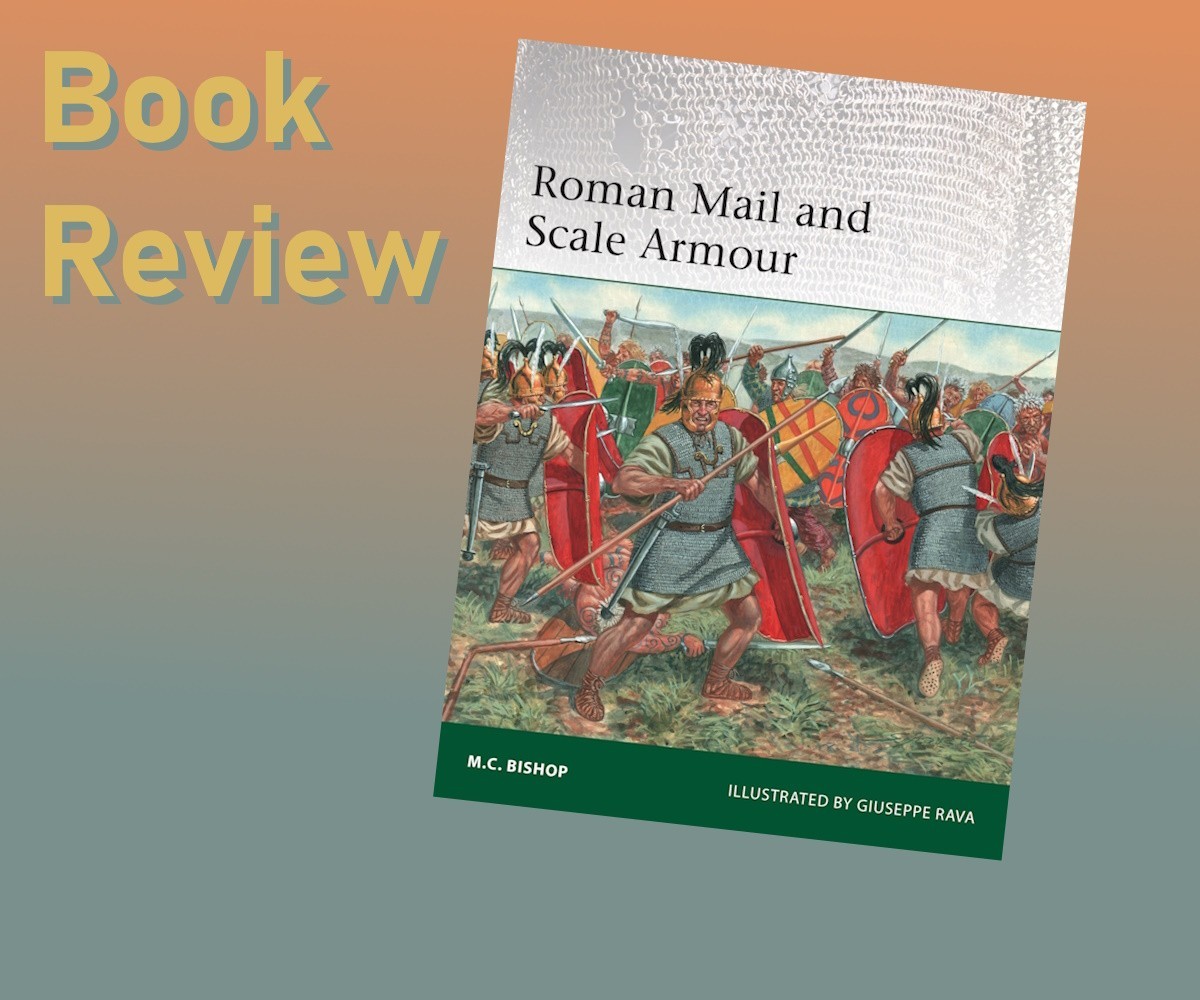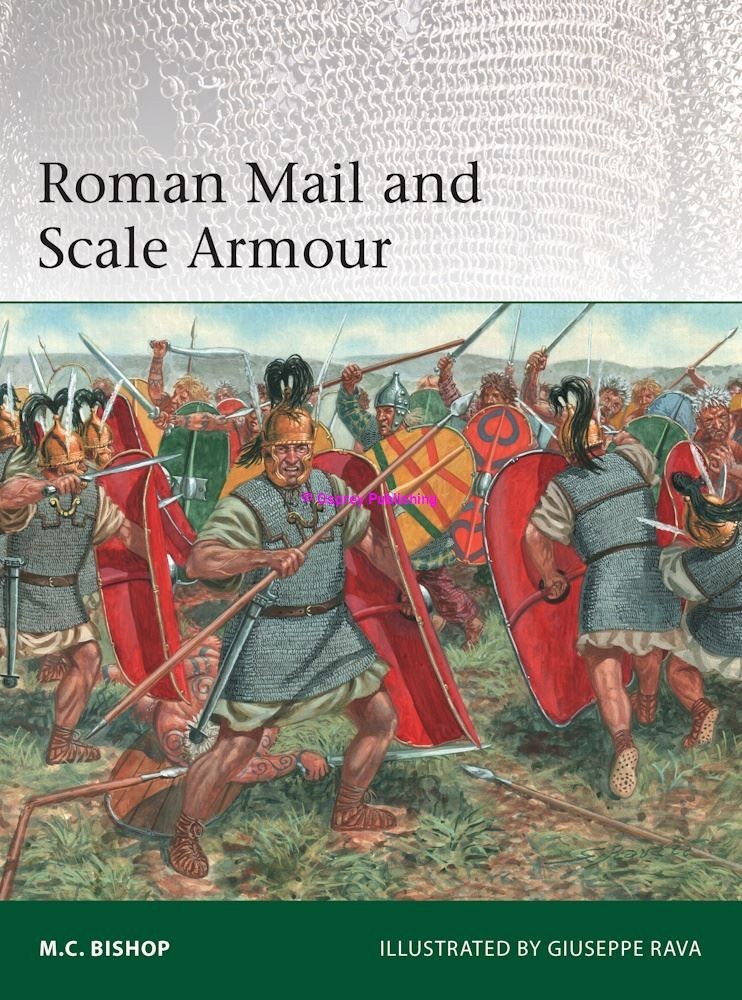
Introduction
Roman Mail and Scale Armour is a recent release by Osprey Publishing. Authored by M.C. Bishop and illustrated by Giuseppe Rava, it is the 252nd title in the series Elite. Catalogued with ISBN 9781472851697 and the Osprey short code ELI 252, this monograph examines one of the iconic body armor systems of antiquity, Roman lorica protected soldiers as they won – and held - much of the Roman Empire. This 64-page book is available in softcover, PDF and ePUB formats.
As Osprey describes the book;
Less glamorous than the Roman Army's instantly recognizable plate armour but much more versatile, mail and scale armour were used by both legionaries and auxiliaries throughout Rome's history. Developed by the Celts and quickly adopted by the Romans, mail armour was easy to make and required little maintenance. Scale was a much older form of armour, originating in the Near East during the second millennium BC. As with mail, it was used by both auxiliaries and legionaries, but like plate armour, it was much more fragile than mail. Both types of armour were also used by gladiators (principally as arm defences).
New discoveries in both mail and scale, as well as in hybrid forms that mixed the two, mean that much more is now known about the development of these types of defence during the Roman period, their efficacy in battle and how they were manufactured and repaired. Featuring specially commissioned artwork and drawing upon the latest findings, this study lifts the veil on the mail and scale armour used by soldiers, gladiators and others during the heyday of Imperial Rome.
In my Roman civilization classes we unfortunately did not study cool stuff like armor and weapons, thus my knowledge of Roman armor originates from Hollywood. Fortunately, Mr. Bishop has taken the time to share his research and knowledge with us through his books. Let’s gird ourselves from the fiction for triumph of facts.
This book is a companion to Mr. Bishop's work Roman Plate Armour.
Contents
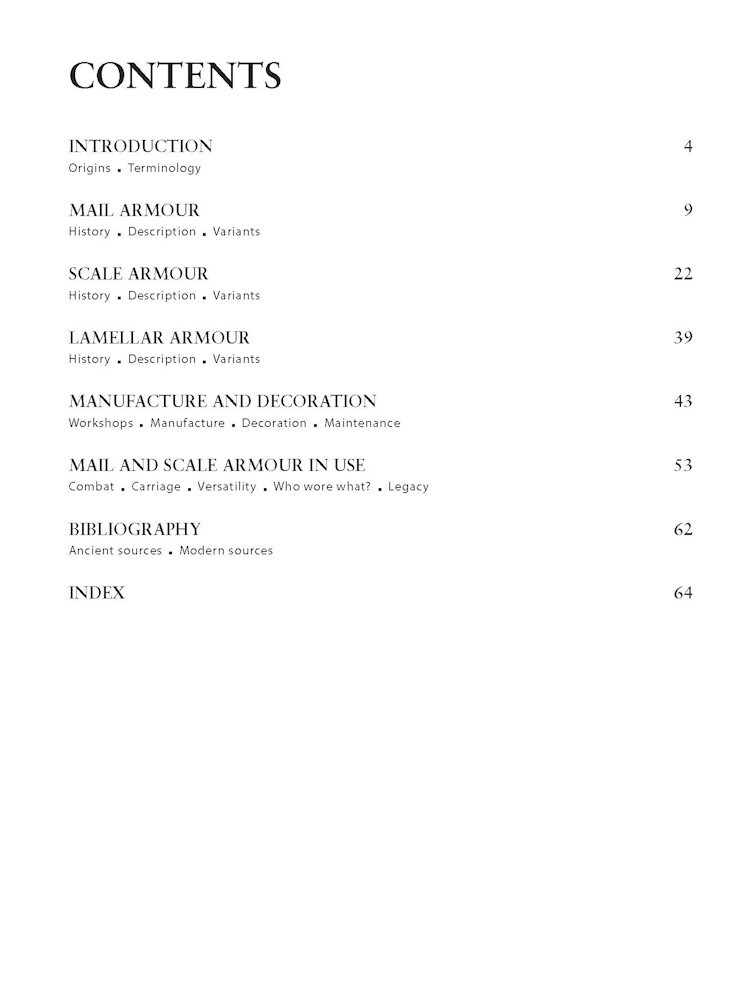
Content
Roman Mail and Scale Armour is presented through six chapters, plus front and back material, in 64 pages:
Table of Contents
Introduction
Mail Armour
Scale Armour
Lamellar Armour
Manufacture and Decoration
Mail and Scale Armour in Use
Mr. Bishop diligently cites sources used in his research, such as why he uses or eschews certain terminology and tautology, i.e., "no Roman-era writer actually used the terms 'lorica hamata' or 'lorica squamata', although they are found...in the 1596 work de militia Romana by Just Lips..." Many other reference material is used, sources by Virgil, Vatican archives, and Greek and Latin terms and spelling, and manuscripts are referenced as well. Mr. Bishop explores the serious archeological and scholarly research into the subject, noting works that have stood the test of time and those which are now questioned. He further describes the significance of Trajan’s Column and other monuments and artifacts in trying to deduce the actual use of Roman armor types, and upon the difficulty pinpointing the technological leaps. First-hand descriptions are included, such as by Greek historian Polybios. The text is supported with call-outs and illustrations. Varieties of mail (lorica hamata, literally 'armor of hooks') and scale armor (lorica squamata) are spotlighted, with descriptions and analysis of design and use, and types, i.e., cuirass. Would you like to know how various pieces were held together? The author explains this topic, i.e., how many links of welded rings were attached by butted rings; the overlap of scale . Where were artifacts found? This is also discussed.
The level of documentation and explanations of details seem to be as comprehensive as possible within the 64-page extent of this book.
Photographs and Artwork
Reinforcing the text are a score of color photos of armor pieces, bas-relief decorations and statues featuring armor, and even reenactors. Each image is accompanied with captions and explanations. To most accurately describe the illustrations, I frequently use the text straight from the image captions. Some armor examples are reproductions, but the majority of them are recovered original artifacts, in various states of decay. These are from museums and personal collections. Two marvelous images are decorated pseudo-Attic helmet with a scale aventail, and scale mail found at Masada.
Artwork
The text is well illustrated. Illustrations are black-and-white pen and ink drawings, detailed with shading, depicting armor and segments. Likewise, the author also illustrates fittings, decorative inlays, figures and similar accoutrements. Artist Giuseppe Rava created several color illustrations for the book.
A. Dominate soldiers in mail and scale, illustration.
B. Anatomy of Mail and Scale, color illustrations of scale and mail types, 2nd century BC - 4th century AD:
1. Mail shirt with shoulder doubling and hooked fasteners
2. Short-sleeve mail shirt
3. Mail shirt fastened with embossed breast plate
4. Long-sleeve mail shirt
5. Scale shirt with shoulder doubling and hooked fasteners
6. Scale shirt with shoulder cape
7. Scale shirt fastened with embossed breast plate
8. Composite scale and mail.
C. Republican Romans and Celts in Combat: In-action color illustration of Roman legionaries in close combat.
D. Vergilius Vaticanus manuscript illustration reproduction.
E. Part of scale armor upper collar drawings.
F. Cleaning Late Roman Armour: scene of maintaining armor under the eye of a legionary.
G. Copper-alloy scale found near Carpow illustration.
H. Portion of ferrous semi-rigid scale from Carlisle, 3-view illustration.
I. Semi-rigid Scale Armor in the Marcommannic Wars: color illustration of column of legionnaires marching screened by cavalry.
J. Portion of scale from Carlisle: 2 views.
K. Types of scale stitching: 6 illustrations.
L. Gladiators Using Mail and Scale Arm Defences: color illustration keyed to 6 subjects.
M. Scale-clad Horses at Dura-Europos: color in-action illustration.
N. Tombstone designs: drawing of six elements of tombstone decoration.
O. Rings of Roman Mail: illustrations.
P. Reproduction of grid-pattern mail: illustrations.
Q. Types of scales: 9 illustrations.
R. Romans battling Parthians relief on helmet bowl: reproduction illustration.
S. Cavalry Patrol: in-action color scene of battle with Britons.
T. Legionaries in a Danubian Fortress: color in-action of inspection time.
Tables
Dimensions of some examples of pre-Roman and Roman mail armor, 21 pieces by:
Artifact type
Period
Ring exterior diameter
Ring interior diameter
Ring thickness
Mail type
Material.
Dimensions of some examples of Roman scale armor, 23 artifacts by:
Site of find
Period
Scale width
Scale height
Size ration
Type
Material.
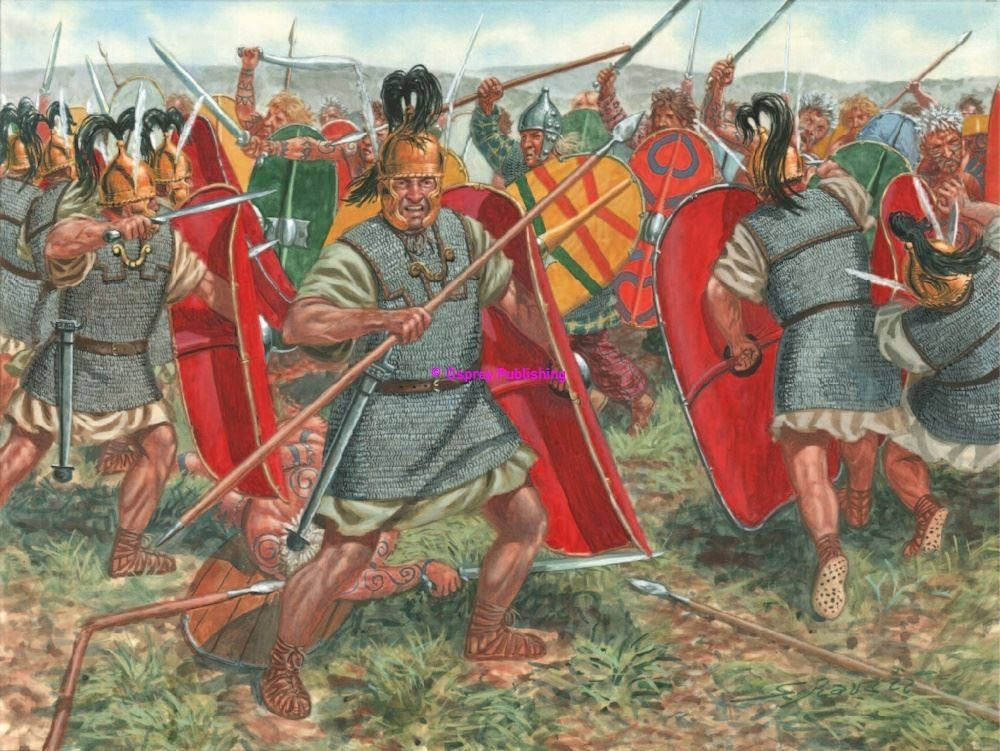
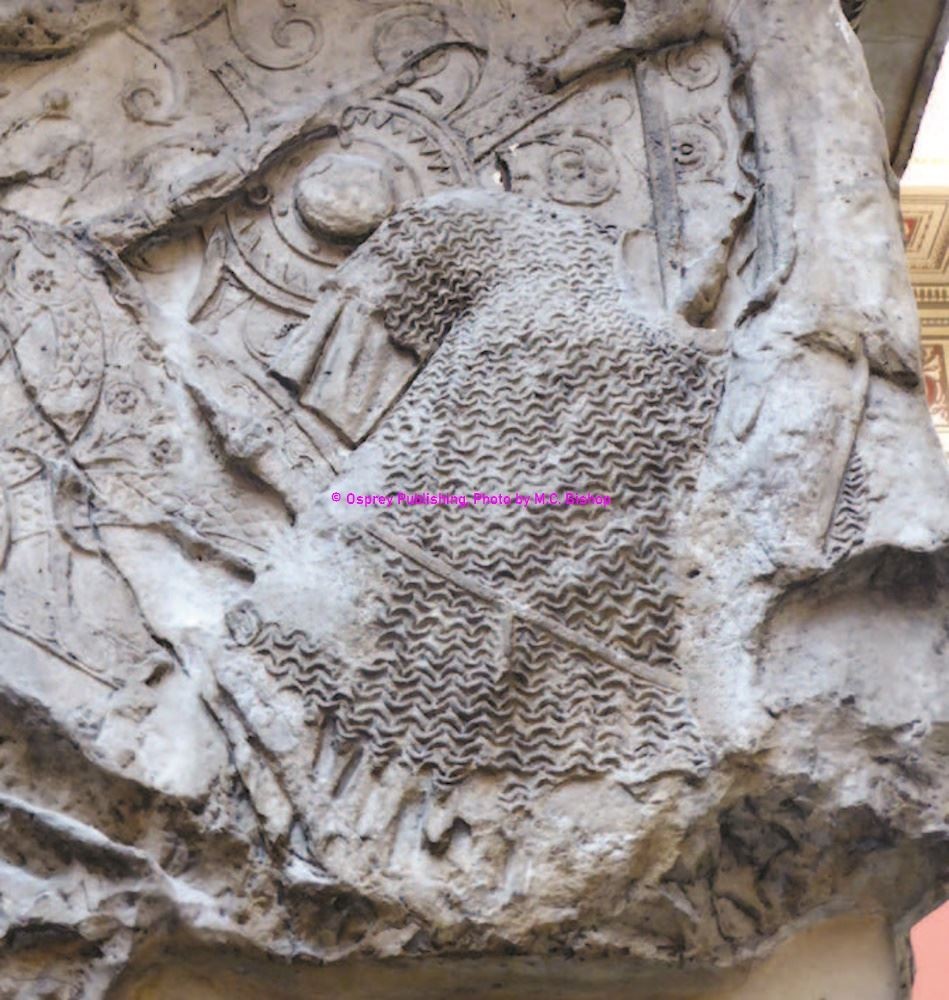
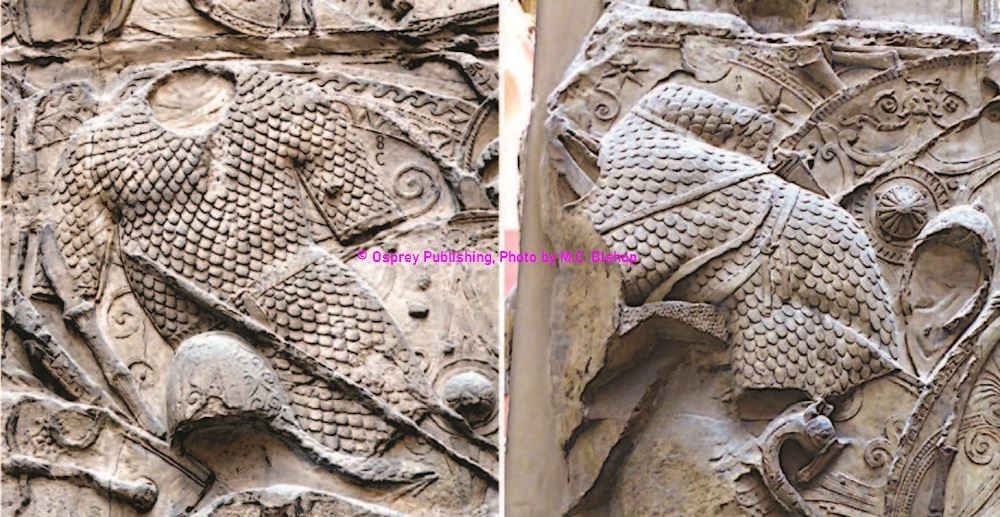

Conclusion
Osprey’s Roman Mail and Scale Armour is another good resource for modelers of Roman legionaries and Praetorians. Like the book about Roman plate armor, I have a greater understanding of the armor and its components, and what type is most accurate to model on a particular legionaries of Imperial Rome. Recommended to those with a historical or modeling interest for Rome’s soldiers.
While individual Roman soldiers are available in 54mm and larger scales, a brief search revealed a derth of 1/32-1/35 injection figures of Roman soldiers, Hät Industries released some sets of figures of the Punic Wars.
http://www.hat.com/current32.html
Those of you who are interested in other books about Roman military kit can read this other review:











